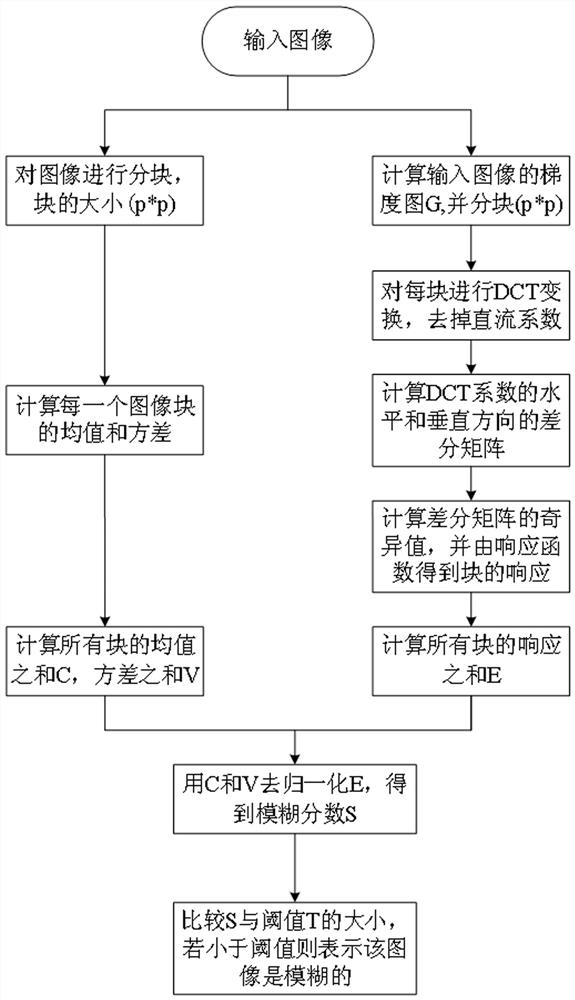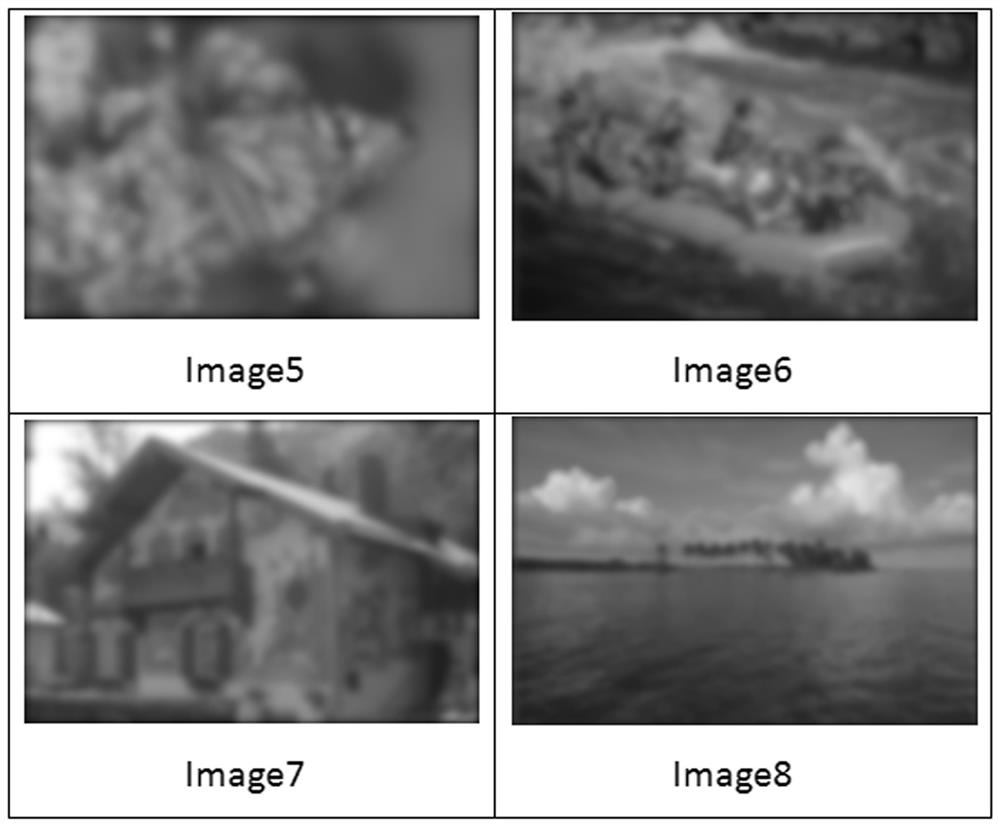Blur detection method based on svd decomposition in image dct domain
A fuzzy detection, image technology, applied in the direction of image analysis, image enhancement, image data processing, etc., can solve the problems of time-consuming, heavy workload, etc., to achieve the effect of retaining validity, improving accuracy, and retaining intuitiveness
- Summary
- Abstract
- Description
- Claims
- Application Information
AI Technical Summary
Problems solved by technology
Method used
Image
Examples
Embodiment Construction
[0022] The specific embodiments of the present invention will be further described in detail below in conjunction with the accompanying drawings. The blur detection method based on the SVD decomposition of the image DCT domain, the specific steps are described as follows figure 1 Shown:
[0023] Step 1: Calculate the gradient map of the image to be detected, and block the gradient image, and the size of the block is p×p.
[0024] Step 2: Perform DCT transformation on each gradient image block to obtain DCT coefficients and remove DC coefficients.
[0025] Step 3: Calculate the difference matrix of the DCT coefficients in the horizontal and vertical directions.
[0026] Step 4: Calculate the singular value of the difference matrix, and get the response of the block by the response function.
[0027] Step 5: Sum the responses of all blocks to get the total response E of the whole image.
[0028] Step 6: divide the image into blocks (block size is the same as step 1), calcula...
PUM
 Login to View More
Login to View More Abstract
Description
Claims
Application Information
 Login to View More
Login to View More - R&D
- Intellectual Property
- Life Sciences
- Materials
- Tech Scout
- Unparalleled Data Quality
- Higher Quality Content
- 60% Fewer Hallucinations
Browse by: Latest US Patents, China's latest patents, Technical Efficacy Thesaurus, Application Domain, Technology Topic, Popular Technical Reports.
© 2025 PatSnap. All rights reserved.Legal|Privacy policy|Modern Slavery Act Transparency Statement|Sitemap|About US| Contact US: help@patsnap.com



